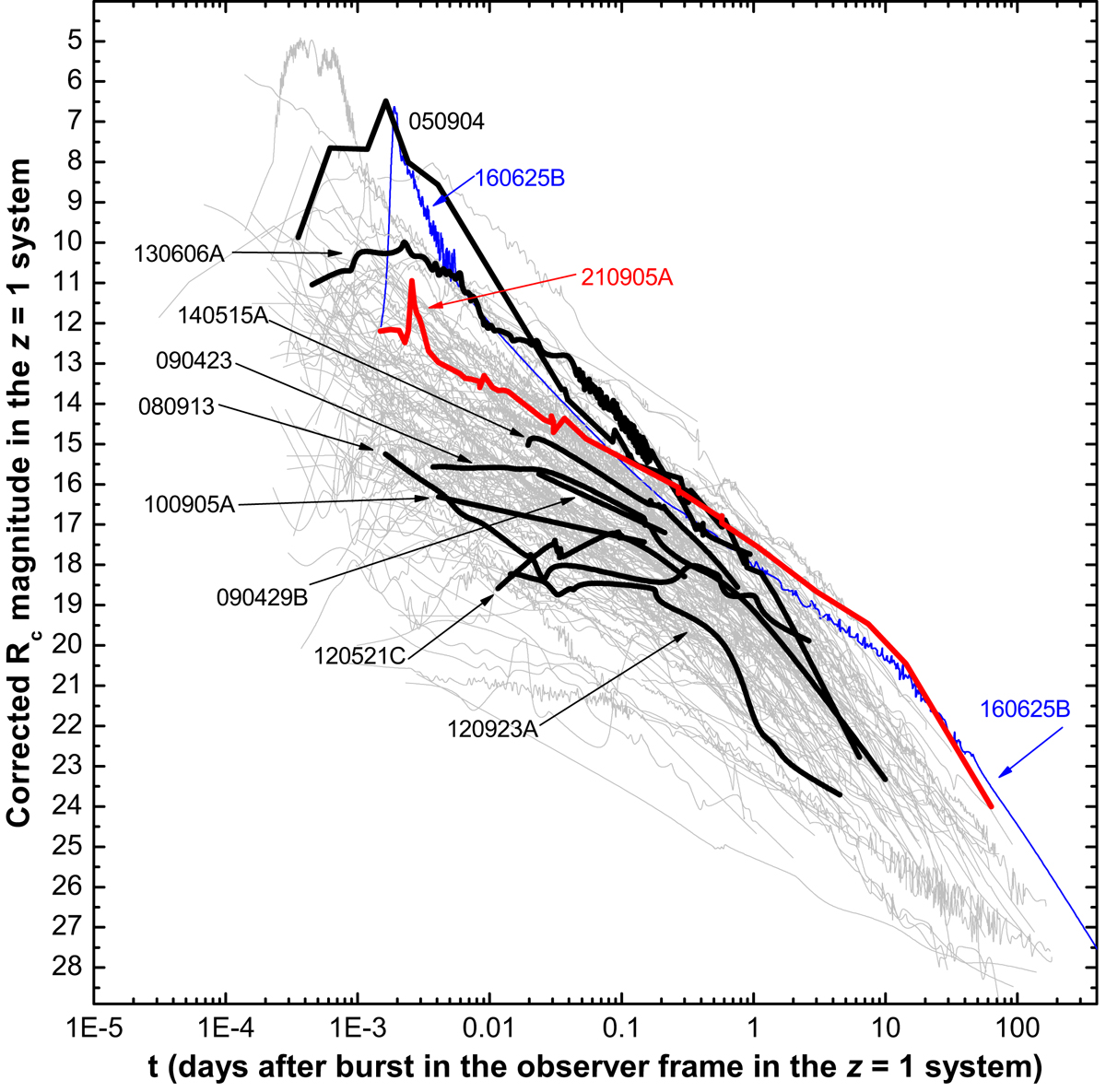Fig. 10.

Download original image
The optical afterglow of GRB 210905A (red line) compared to a sample of extinction-corrected afterglows which have all been shifted to z = 1, from Kann et al. (2006, 2010, 2011, and in prep.). Hereby, time and magnitudes are given in the observer frame, but assuming all GRBs are at z = 1 in a perfectly transparent universe. Light grey are LGRBs, thicker black lines GRBs with redshifts z ≳ 6. All magnitudes are in the Vega system. The afterglow of GRB 210905A is the most luminous afterglow ever detected at moderately late times, before finally decaying faster than that of GRB 160625B (blue line). For this light curve, the potential constant source has been subtracted, see Sect. 4.5 for more details. The late-time break in the light curve is clearly visible.
Current usage metrics show cumulative count of Article Views (full-text article views including HTML views, PDF and ePub downloads, according to the available data) and Abstracts Views on Vision4Press platform.
Data correspond to usage on the plateform after 2015. The current usage metrics is available 48-96 hours after online publication and is updated daily on week days.
Initial download of the metrics may take a while.


